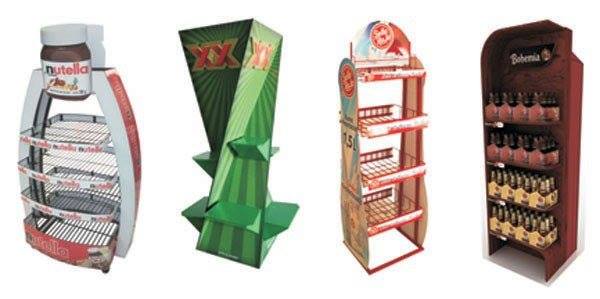Regular boxes, rigid boxes, regular displays, POP displays, all are part of the different marketing strategies used today to get a brand, and therefore a product, in front of the consumer. However, today we are going to refer specifically to POP displays, let’s start by clarifying that POP is the acronym for “Point of Purchase” which in Spanish means “Point of Purchase” that is, to put the product as close as possible to the customer at the point where it will be purchased: self-service stores, corner stores, etc.
Luxury Boxes
Luxury Boxes
On the other hand, cardboard became the material par excellence for this type of displays because of its low cost, it can be manufactured in any quantity required without the final cost being disproportionate. It also allows you to make all kinds of designs that are as eye-catching as possible and attract the potential buyer, which is what is needed to complete the purchasing process.

RIGID BOXES, DISPLAYS, EVERYTHING IS PART OF THE MARKETING STRATEGY.
But in the case of POP displays we must distinguish two main types, the first are those that, as its name suggests, go directly on the floor and have a sufficient height (no more than 1.60mts) so that the product is available to the consumer at any point of the store and so he can buy it.

They are also used for much more complex setups where, by combining several of them and other additional elements, it is possible to create totally immersive experiences that lead the potential consumer to live the experience that the brand is looking for, and this applies to literally everything: consumables, films, product presentation and launch, etc.
Normally this type of exhibitors are used in areas where space is ample and can be located from one to several to cover the main traffic points in the place, we must remember that in self-service stores traffic patterns are handled so they should be placed based on these to achieve the greatest possible effect.
On the other hand, tabletop displays are designed for smaller places where the product must be placed on a surface such as in neighborhood stores where there is not much space and the clerk has a display case or table where everything to be sold is placed, here, tabletop POP displays serve the same function as, for example, rigid boxes, attracting attention when the potential buyer arrives to draw him to the product and make the sale.
In conclusion, POP displays have the critical mission of isolating the product and the brand from its potential competitors and bringing the product closer to the consumer so that he/she feels attracted to it and without any other additional element that could divert attention, to close the sale, hence it is said that this element is a silent seller but no less effective for that reason.
With Cyecsa / Kibox, you will have the peace of mind that you are working with a company that cares ecologically, socially, and economically.
If you want more information, connect with us via Kibot for a personalized consultation.


